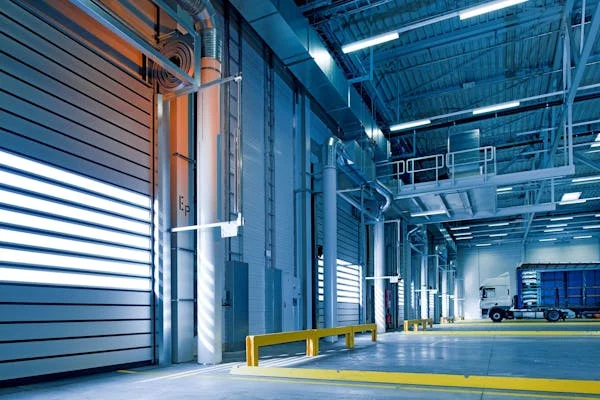The last couple of years have seen many changes in industries due to the use of drone technology. Among many sectors that are being changed with the help of drones is infrastructure inspection. Whereas road, bridge, and power line inspection used to be a time-consuming task and laborious, employees were also under threat of hazards during processes. With the new advancement in drone technology, inspections are done much faster, safer, and cheaper for an organization. The article will elaborate on how drones can be used in infrastructure inspections, and many other benefits that come along with the use of drones.
Improvement of Safety and Minimization of Risks
Indeed, one of the most important benefits of using drones in infrastructure inspection is safety. In order to perform tasks on basic infrastructure, such as bridges and power lines, employees often have to climb high or work in hazardous conditions. This leaves them quite susceptible to falling, electric shock, and other weather-related factors. Companies can reduce the presence of people in risky situations with the use of drones.
Drones equipped with high-resolution cameras and sensors can capture the best images with comprehensive data while maintaining a safe distance from the target. In such a way, inspectors can assess the condition of structures without necessarily having to access them physically. This is an effective way of reducing accidents and injuries. Besides, drones can access very hard environments, especially where there has been a natural disaster or probably in cases where the location is remote to human access.
Increasing Efficiency and Speed
Traditional ways of infrastructure inspection involve rather lengthy procedures that, on occasion, even take days or weeks. Drones decrease that time a lot. It would take some hours or even days for a crew to do a proper inspection of a bridge or powerline conventionally. A drone with the necessary technology would perform it in a fraction of that time.
With such speed, more frequent inspections with drones of the infrastructure are possible, hence more thorough monitoring and maintenance of assets. It finds problems before they become serious as part of regular inspections, which also saves an organization money on repairs and extends the life expectancy of its infrastructure in the long run.
Capturing High Quality Data
It has advanced imaging technologies with high-resolution cameras, LiDAR, and thermal imagery. This allows drones to capture that level of detail data which, when analyzed, can describe conditions in infrastructure.
For example, LiDAR lets one measure structures with much higher resolution than previously, and the slightest change in a structure over time can be identified. Thermal imaging shows hotspots in power lines that might fail but before they do. With this vast amount of information, engineers and inspectors can make really educated decisions about which repairs or maintenance need to be carried out to make infrastructure more reliable.
Moreover, the fact that high-quality visual information could be captured implies that such inspection would be well documented. These can be useful evidence in case of disputes or insurance claims or regulatory requirements. The visuals can also be published for public relations, showing a concern for safety and reliability of the infrastructure.
Cost-Effectiveness
While drone technology presents a high initial investment cost, savings realized over time may overwhelm. In classic inspection methods, labor costs, rentals, and probable downtime for the infrastructure that is being studied usually incur huge costs. Drones could reduce such expenses by hastening the whole process with fewer personnel deployed on site.
In addition, early identification prevents costly repairs stemming from neglect or delayed maintenance since regular inspections keep that from happening. Drones help an organization be more proactive with infrastructure management, which leads to a healthier bottom line. Using a aerial videography can also further reduce expenses as they will own the drone and you will not need to upfront the cost.
Environmental Considerations
This is not only an advantage of the infrastructure inspection field itself, but also one related to the reduction of environmental impacts. Conventional methods can engage heavy machinery or even vehicles, and that definitely has greater impacts on the surroundings. Especially in sensitive ecosystems, drones are able to perform their function without causing huge disruption-which often applies to power lines and pipelines.
Another field of application of drones is in the monitoring of the environmental impact caused by infrastructure projects. In this case, they would undertake vegetation growth assessment, changes in land use, as well as monitor wildlife habitats; all of this vital information is used to enable organizations to meet set environmental regulations and standards.
Future Trends and Innovations
Infrastructure inspection using drone technology will advance with future evolvements of the drones themselves. Innovations such as AI and machine learning will have a big role in data analysis. Employing algorithmic methods using artificial intelligence in images captured by drones, along with sensor data from the drones, it becomes possible to identify anomalies, predict future needs for maintenance, and even to undertake partial automation of work.
Further, the connectivity of drones with other technologies like the Internet of Things (IoT) can be placed under a more holistic kind of infrastructure management. Sensors could actually be embedded into structures and then transmitted data in real-time to the drones to enhance inspection capabilities and support decision-making.
Conclusion
The role of drones in infrastructure inspection is to change the course for the better in how organizations approach the maintenance and monitoring of roads, bridges, and power lines. Because of enhanced safety, improved efficiency in capturing high-quality data, and cost-effective solutions, drones have indeed become an important tool in infrastructure management. As technology continues to move forward, the possibilities of drones in this field will continue to grow by enabling smarter, safer, and more sustainable infrastructure practices. The adoption of drone technology is becoming less of an option for businesses and more of a requirement within this slowly but competitively emerging safety culture.





